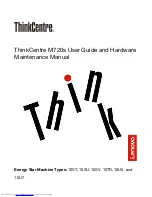
Appendix E: Glossary of terms
The following is a GLOSSARY OF FREQUENTLY USED ACRONYMS AND
TERMINOLOGY (not all of these are present in this Welcome Guide but you might find
their inclusion useful). This glossary details the more frequently used industry acronyms and
terminology
Application
Software which performs a particular function for a user e.g.
word processing, database management.
ARM
Acronym for Advanced RISC Machines.
ASCII
American Standard Code for Information Interchange. Standard
ASCII assigns the numbers 0-127 to different alphabetic and
control characters. Extended ASCII extends this character set to
256 to include non-English and graphic characters.
Baud
A measure of speed in digital communications.
Bit
Short for "Binary Digit", the bit is the basic data element of
digital computers and digital communications. A bit may have a
value of zero or one.
Bit rate
The rate at which data is transferred (usually in megabits per
second or kilobits persecond).
Bus
A path over which digital information is transferred from any of
several sources to any of several destinations. The sources and
destinations may be inside or utside the computer.
Byte
A group of eight bits. A byte is usually used to represent single
character or digit.
Cache
Very fast memory made from SRAM chips, used to "feed"
microprocessors data at their maximum rate (DRAM memory is
too slow).
Chip
A chip is a single, flat piece of silicon on which a specific
semiconductor element or circuit has been fabricated. Most chips
are placed into larger packages that provide protection and
facilitate connection of the chip to the system.
CISC
Acronym for Complex Instruction Set Computing Device. A
highly flexible but not very efficient device containing a number
of instructions for specific applications in a microprocessor
CLI
Acronym for Command Line Interpreter.
Clock
Sends of signals that are processed by the microprocessor. Clock
speed cycles are measured in megahertz (MHz)
77
















































